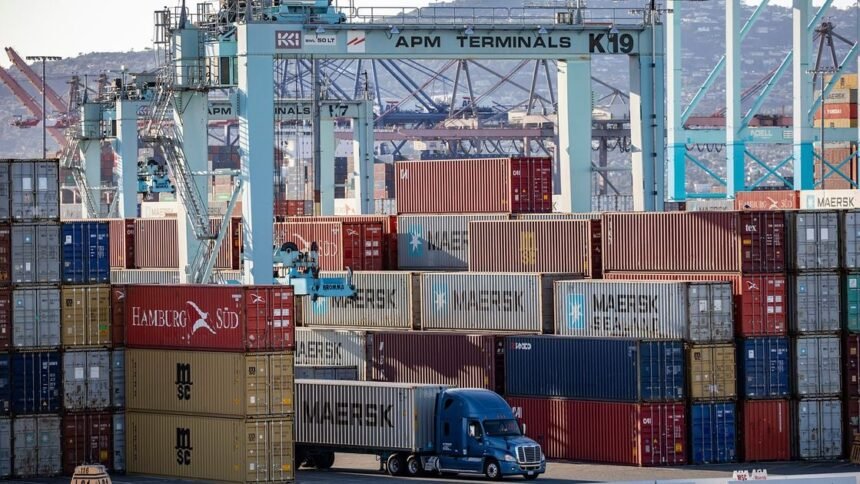May 2025 imports at the Port of Los Angeles were 9% less than last year, and 17% less than the port’s five-year running average for the month of May.
File photo: Port of Los Angeles
After 10 straight months of year-over-year growth, overall cargo volume at the Port of Los Angeles slowed in May due to the impact of tariffs on both imports and exports.
The Port of Los Angeles processed 716,619 Twenty-Foot Equivalent Units (TEUs) in May, 5% less than last year.
“May marked our lowest monthly cargo output in over two years,” Port of Los Angeles Executive Director Gene Seroka said at a media briefing, although he did say it was a little better than port officials expected.
“To give you some perspective, the last six months of 2024 here at the Port of Los Angeles, we averaged 927,000 container units each month.”
Imports, Exports Both Down
Inbound cargo totaled 356,000 TEUs, which was 25% less than the port had forecasted on April 1 before the tariffs were announced.
May 2025 loaded imports came in at 355,950 TEUs, 9% less than the previous year. And compared to the port’s five-year running average for the month of May, imports were down 17%.
“While May volume is typically stronger than April as we approach our traditional peak season, our imports dropped 19% compared to last month,” Seroka said.
Loaded exports landed at 120,196 TEUs, a 5% drop from 2024.
“That lands us at six straight months of declining exports,” Seroka said.
The port processed 240,472 empty container units, 2% more than last year.
What Will Port of LA Container Traffic Look Like in 2025?
For the first five months in 2025, the Port of Los Angeles handled 4.06 million TEUs. That was 4% more than the same period in 2024, likely driven by the surge in imports as companies tried to bring in cargo ahead of expected tariffs.
Seroka said he expects overall cargo flow to remain modest for the balance of 2025.
He said the National Retail Federation’s Port Tracker predicts a decline in imports for June, July, and August.
Fast-Changing Tariff Policies
Seroka noted that more than 60 announcements on trade and tariffs have come from Washington since January, and the uncertainty created by these fast-changing tariff policies is affecting business decisions among those whose imports and exports move through the ports.
“What I continue to hear [from businesses] is we want clarity, longer range planning capability, and much lower tariffs,” he said.
“Unless long-term, comprehensive trade agreements are reached soon, we’ll likely see higher prices and less selection during the year-end holiday season,” Seroka added.











